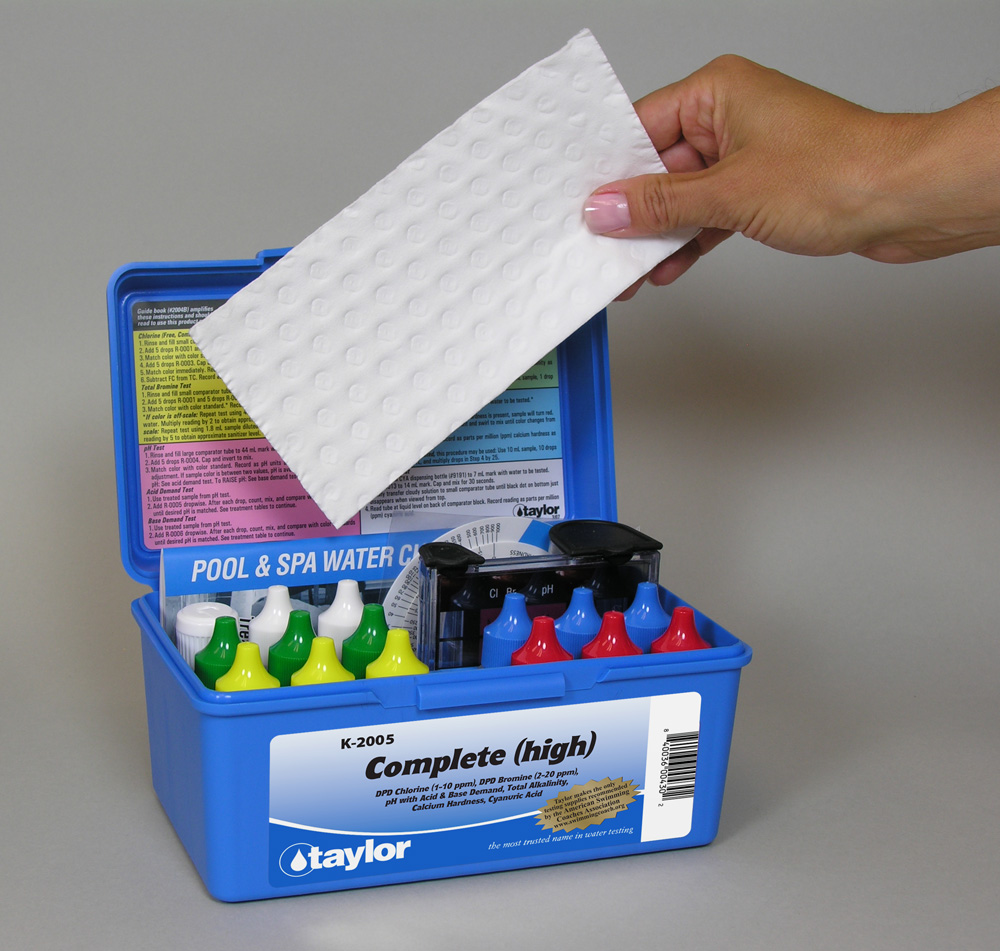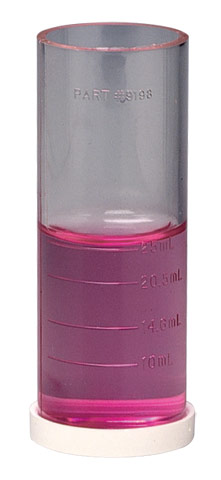Questions In Our Pool/Spa Mailbag
Some unusual questions have come in lately and here we share the answers with all taylortalk readers.
What's the white cloth for in my test kit? I’ve been using it as a background to view test results.
This is packing material meant to cushion the contents and to absorb any leakage that might occur if the kit's damaged in transit. The enduser can throw it away; its job is done. There are manufacturers who say to view their colorimetric tests against a white background, but this is not necessary with ours.
When you are performing a chlorine, bromine, pH, iron, copper, or other color-matching test from Taylor, you should be in natural daylight but not looking through the comparator into the sun. Hold the comparator at eye level as shown in the drawing. If you are testing indoors, it's best to use a daylight simulator. We sell a portable daylight simulator, the Daylight Comparator Lamp (#9199), for use with Midget™ comparators or the comparators in our 2000 Series™ or sureTREAT® kits. To accommodate the longer Slide™ comparators in our professional kits, the lamp can be placed on a lightbox stand (#9200).

I'm using the K-2006 [a combo kit which employs the FAS-DPD powder/liquid method for chlorine testing]. I add enough drops to make the chlorine sample go from pink to colorless. I think the test is finished but if I wait a few minutes, the sample water starts turning pink again. Should I go with the first reading I get?
Yes. With this FAS-DPD titration, you should count the number of drops it takes to reach the test's true endpoint: when it goes from pink to colorless the first time. If the titrated sample sits for a while longer, any excess DPD in the water will be oxidized by contact with the air above it and you'll see some pink come back into the sample. Moral of the story: Timing in life is everything!
Here's another example of this. When you are testing chlorine or bromine, you should take your sample from the pool or spa and begin the test immediately. Otherwise, the sanitizer level will begin to dissipate when left exposed to air and you will get a false-low reading. Even if you collect a sample in a plastic bottle, which you then cap and take to a dealer for testing, you should not let much time go by if you want the most accurate reading since halogens such as chlorine and bromine are unstable compounds.
Do pool or spa water samples have to be at "room temperature" before testing begins?
For consistency, reliability, and accuracy, we recommend sample temperatures to be between 50-90℉. Sample temperatures <50℉ or >90℉ may produce unexpected color development.
At a self-help site on the Internet run by pool owners, I read that I need to swirl the Taylor calcium hardness test for 20 to 30 seconds between each drop of titrant to get an accurate test result. Is this advice correct? If so, I will be swirling for 15 minutes!
No, this is not true. In fact, if you take 15 minutes to run the calcium hardness test you would just be wasting valuable time. You need to swirl long enough to incorporate each drop—a second or two, that's all. As noted on page 12 of the testing and treatment guide that comes with 2000 Series kits, you should disregard any pink "floaters" that develop. These small clumps are related to the presence of magnesium hardness in the water and do not affect the test result for calcium hardness. We note, however, that service techs and retailers doing in-store testing run many, many drop tests in a day. The magnetic stirrer described here will be a timesaver for them.



